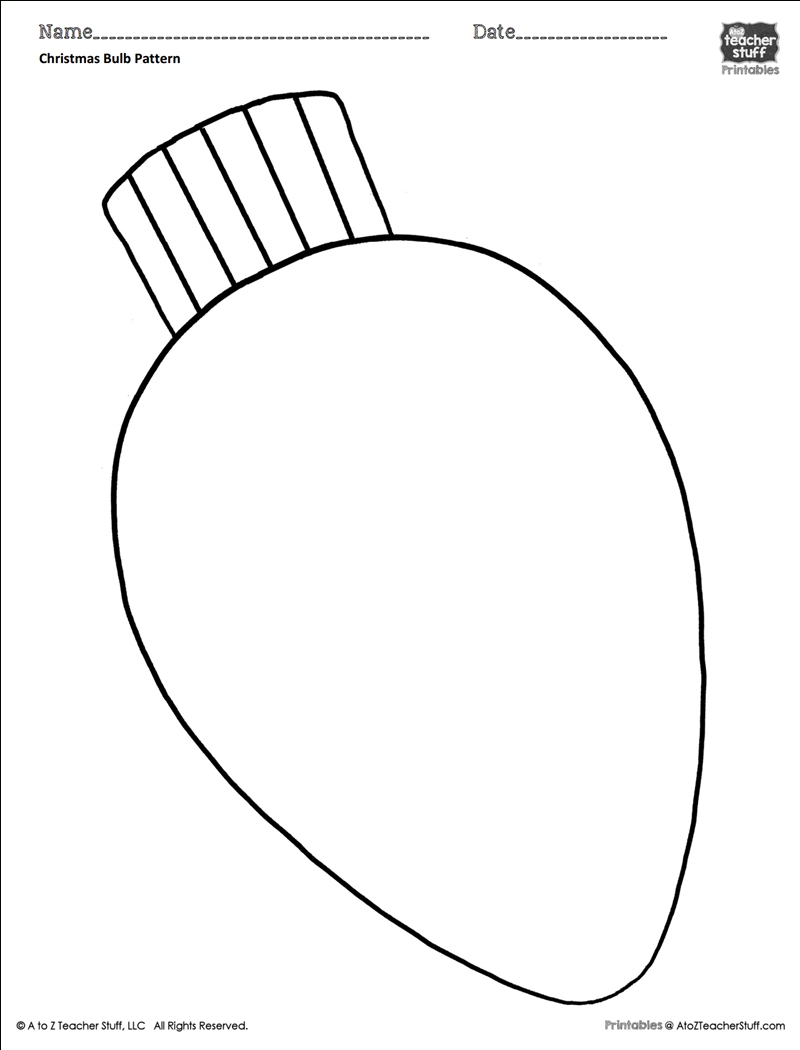The light bulb has become a symbol of innovation and creativity. It is a testament to the ingenuity of humankind to be able to harness the power of electricity and turn it into light. The light bulb has come a long way since its inception, but it remains an important part of our daily lives.
Light Bulb Template
 The light bulb template is a great resource for anyone looking to explore the world of electrical engineering. This template can be used to create a variety of projects, from simple circuits to more complex devices. The light bulb template is easy to use and can be customized to fit your needs.
The light bulb template is a great resource for anyone looking to explore the world of electrical engineering. This template can be used to create a variety of projects, from simple circuits to more complex devices. The light bulb template is easy to use and can be customized to fit your needs.
The History of the Light Bulb
The light bulb has a long and fascinating history. In the early 1800s, inventors began experimenting with electric lamps. It wasn’t until 1879 that Thomas Edison invented the first commercially viable light bulb. Edison’s bulb used a carbon filament and had a lifespan of about 1200 hours. This was a significant improvement over earlier designs, which had a lifespan of only a few hours.
Over the years, the light bulb has undergone many changes and improvements. The incandescent light bulb remained the predominant type of bulb until the 1990s when more energy-efficient alternatives began to emerge. Compact fluorescent bulbs, or CFLs, became popular in the late 1990s because they were more energy-efficient than traditional incandescent bulbs. However, CFLs had some drawbacks, including a slow startup time and the presence of toxic chemicals, such as mercury.
LEDs, or light-emitting diodes, have become the most popular type of light bulb in recent years. LEDs are extremely energy-efficient and can last up to 25,000 hours or more. They also produce less heat than other types of bulbs, which can help reduce cooling costs. LEDs are also more environmentally friendly than other types of bulbs because they do not contain any toxic materials.
The Science of Light Bulbs
The science of light bulbs is fascinating. The light bulb works by heating up a filament, which then emits light. The filament is made of a thin wire, usually made of tungsten, which is coiled into a spiral shape. When an electric current is passed through the wire, it heats up and emits light. The glass bulb that surrounds the filament is filled with a gas, such as nitrogen or argon, which helps to prevent the filament from burning up.
The light bulb also uses a process called incandescence to produce light. Incandescence is the process of emitting light as a result of being heated to a high temperature. When the filament in the light bulb is heated up, it emits light as a result of incandescence. However, most of the energy used to heat the filament is wasted as heat, which is why incandescent bulbs are not very energy-efficient.
The Future of Light Bulbs
The future of light bulbs is bright. As technology continues to advance, we can expect to see even more energy-efficient and environmentally friendly light bulbs in the years to come. Researchers are currently working on developing new types of bulbs, such as OLEDs, or organic light-emitting diodes. OLEDs are made of organic materials, such as carbon and hydrogen, and can be used to create flexible and lightweight displays.
Other researchers are exploring the use of nanotechnology to create more energy-efficient light bulbs. Nanotechnology involves manipulating materials at the atomic and molecular level to create new materials with unique properties. By using nanotechnology, researchers hope to create light bulbs that are even more energy-efficient and longer-lasting than current LED bulbs.
Overall, the light bulb has come a long way since its inception. From Thomas Edison’s early prototype to the advanced LED bulbs of today, the light bulb has become an essential part of our daily lives. As technology continues to advance, we can expect to see even more exciting developments in the world of lighting. Whether you’re an electrical engineer or just someone who appreciates good lighting, the light bulb template is a great resource for exploring the science and history of this amazing invention.